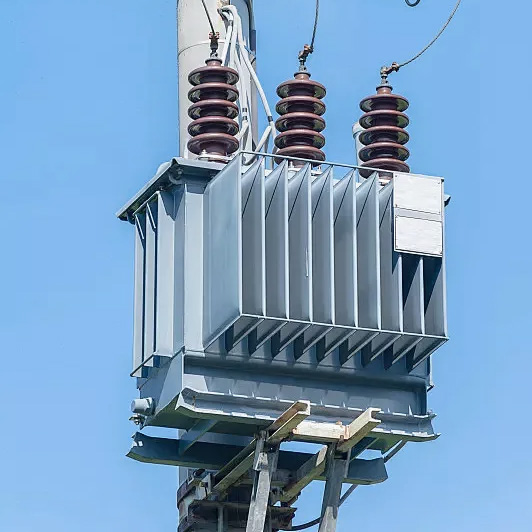Oil-immersed transformers, also known as oil-filled transformers, are a type of electrical transformer that uses oil as an insulating and cooling medium. These transformers are widely used in power distribution and electrical applications due to their efficiency, reliability, and ability to handle high voltage and power levels. This article explores the working principles, components, advantages, and applications of oil-immersed transformers.
Working Principles
An oil-immersed transformer operates on the basic principle of electromagnetic induction. It consists of primary and secondary windings, which are coils of wire wound around a laminated iron core. When an alternating current (AC) flows through the primary winding, it creates a magnetic field that induces a voltage in the secondary winding. This process allows the transformer to convert electrical energy from one voltage level to another.
The key to the transformer’s efficiency and performance lies in its ability to manage heat and insulation. The oil used in these transformers serves two primary purposes: insulation and cooling. The oil insulates the windings and other internal components, preventing electrical breakdown and short circuits. It also absorbs and dissipates the heat generated during operation, maintaining the transformer’s temperature within safe limits.

Components of Oil-Immersed Transformers
- Core
The core is made of laminated silicon steel sheets, designed to provide a low reluctance path for the magnetic flux. It is crucial for the efficient transfer of energy between the primary and secondary windings.
- Windings
The primary and secondary windings are made of copper or aluminum conductors. These windings are insulated with materials like paper or varnish to prevent short circuits and electrical leakage.
- Transformer Oil
Special mineral oil or synthetic oil is used in oil-immersed transformers. This oil provides electrical insulation and helps in dissipating heat generated within the transformer.
- Tank
The tank is a sealed container that holds the core, windings, and oil. It is typically made of steel and is designed to withstand the internal pressure generated by the thermal expansion of the oil.
- Conservator
The conservator is an auxiliary tank connected to the main tank. It accommodates the expansion and contraction of the oil due to temperature variations, ensuring the main tank remains fully filled with oil.
- Breather
The breather is a device fitted with silica gel to absorb moisture from the air entering the conservator. This prevents moisture from contaminating the oil, which could degrade its insulating properties.
- Radiators
Radiators are external cooling fins or tubes attached to the tank. They increase the surface area for heat dissipation, helping to maintain the transformer’s temperature within safe limits.
- Buchholz Relay
The Buchholz relay is a safety device that detects gas accumulation within the transformer, which can indicate an internal fault. It triggers an alarm or shuts down the transformer to prevent further damage.
Operation
When an AC voltage is applied to the primary winding, it creates a magnetic field in the core. This magnetic field induces a voltage in the secondary winding, allowing electrical energy to be transferred from the primary to the secondary side. The voltage level can be stepped up or stepped down depending on the ratio of turns in the primary and secondary windings.
The heat generated during this process is absorbed by the oil, which then circulates through the radiators to dissipate the heat into the surrounding air. This natural convection process helps maintain the temperature of the transformer, ensuring efficient and reliable operation.
Advantages
Oil-immersed transformers offer several advantages:
- High Efficiency: They have high efficiency and can handle large power loads with minimal losses.
- Reliable Cooling: The oil provides effective cooling, allowing the transformer to operate at higher power levels without overheating.
- Durability: The oil acts as a protective barrier, preventing oxidation and corrosion of the internal components.
- Cost-Effective: They are generally more cost-effective compared to dry-type transformers for high voltage and power applications.
Applications
Oil-immersed transformers are used in a wide range of applications, including:
- Power Generation Plants: They step up the voltage for transmission to reduce losses.
- Substations: They step down the voltage for distribution to homes and industries.
- Industrial Applications: They provide power to machinery and equipment in factories and plants.
- Renewable Energy Systems: They are used in solar and wind power systems to convert and distribute electrical energy.
Conclusion
Oil-immersed transformers play a critical role in the electrical power industry. Their ability to efficiently convert voltage levels, manage heat, and provide reliable insulation makes them indispensable in various power distribution and industrial applications. Understanding their components and working principles helps in appreciating their significance and ensuring their optimal performance in different settings.



